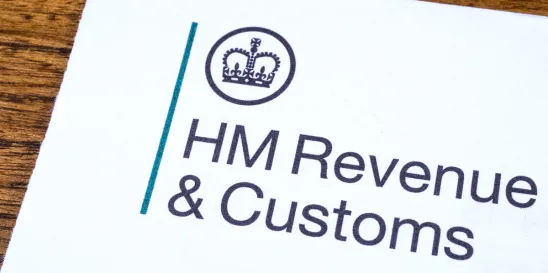On 6 December, HMRC updated the section in its International Manual discussing the UK tax characterisation of overseas entities, and of Delaware (and other US) limited liability companies (LLCs) in particular (in INTM180000 and INTM180050).
This part of the International Manual sets out HMRC’s views on whether certain foreign entities are “opaque” or “transparent” for UK tax purposes and the characteristics of the relevant overseas law applicable to the entities which are relevant to making the determination. The foreign entities referred to are those that have been specifically considered by HMRC over a number of years. As a general matter, if an entity is described as “transparent” then any UK resident members of the entity will be subject to tax on income or gains as they arise to the entity and whether or not they are distributed. On the other hand, an entity described as “opaque” means that the entity itself is liable to tax on its income and gains and the members are taxed only if they receive a distribution (for example, a dividend).
This update has seen three new sections added to the manual:
- INTM180040 (How HMRC arrives at a definitive view of specific foreign entities)- HMRC explains in more detail how it assesses a foreign entity’s status as tax opaque or tax transparent for UK tax purposes.
- INTM180050 (HMRC view of Delaware LLCs in light of Anson)- it confirms that HMRC considers the conclusions of the Anson case, that said that a Delaware LLC was transparent for UK tax purposes (or that a member was entitled to credit against his UK tax on distributions received from the LLC for the US tax paid on the LLC’s profits, as being specific to the facts in that case and that HMRC would generally consider that Delaware (and other US) LLCs are opaque for UK tax purposes.
- INTM180060 (Contacts and clearances)- HMRC guidance on non-statutory clearances for the status of an entity in specific cases.
The following points are also important to note with respect to the updates:
- “Transparent” and “Opaque” are labels rather than legislative terms, and the updated guidance explains the importance of applying particular legislation (specifically, the phrase used in it) to the case’s facts.
- The concept of “entity shielding” is also discussed, including its significance in characterising whether an entity is opaque or transparent, and what it means for an entity to issue share capital (which is one of the factors that HMRC uses to determine whether an entity is opaque). “Entity shielding” refers to the protection of the entity’s assets from members and their creditors. In order to be able to shield assets, an entity must have separate legal personality and have the ability to carry on business as an entity distinct from the members jointly or in common. In addition, the entity will own the business assets and be responsible for its debts. These are all factors HMRC takes into account when considering an entity’s status.
- HMRC explains that, following Anson, it will continue to treat US LLCs (especially Delaware LLCs) as opaque for UK tax purposes, although Anson did reach the opposite conclusion on the facts in that case. A case by case approach will be taken, although the new guidance also refers to applying its normal risk-based approach to opening an enquiry or making a discovery assessment in relation to individual members who have claimed double taxation relief in respect of US tax on an LLC’s profits, income or gains (or otherwise self-assessed on the basis that the profits belong to the LLC’s members).
HMRC states that, based on its understanding of applicable Delaware law, the following factors (particularly Section 18 of the Delaware LLC Act) were relevant when reaching its conclusions following the Anson ruling:
- The LLC will usually carry on the business and incur its expenses and receive its income- it will, therefore, be the LLC rather than its members which earn the profits.
- LLCs are capable of being entitled to profits. This is because they are separate legal entities distinct from their members.
- The LLC will usually own the assets used in carrying on the business. The members have no specific interest in the property.
- The LLC, not its members, will usually be responsible for the debts, obligations and liabilities incurred.
- Members only become creditors to the LLC with respect to their economic interest in the LLC when they become entitled to a distribution.
- A member is only entitled to an interim distribution to the extent permitted by the LLC Agreement. The LLC is not permitted to make a distribution if it is insolvent or if the distribution would make the LLC insolvent.
- Creditors of members have no right to the property of the LLC. The court has to make a “charging order” against a member’s “LLC interest” before a creditor has a right to receive the distribution. In other words, the LLCs demonstrate entity shielding as discussed above.
- On a winding up of the LLC, assets are first distributed to the creditors before the LLC members.
- In HMRC’s view, the LLC agreement (to which the LLC is a party) along with the Delaware LLC Act provide the mechanism for the transfer of profits from the LLC to the members.
By way of brief background, in Anson v HMRC, the claimant was a UK resident (but non-domiciled for tax purposes) and was a member of a Delaware LLC which carried on a trade. The LLC elected to be treated as a partnership for US tax purposes and under US law, Mr Anson was liable on his share of the LLC’s profits. A question arose as to whether under UK law, Mr Anson was entitled to double taxation relief under the UK-US double taxation convention. The issue was whether he was liable to UK tax (as a member of a partnership) on the same profits which he already paid US taxes on (if so, he could claim tax relief) or whether he was only liable if the LLC made a distribution to him. After working its way through the courts, the Supreme Court eventually ruled in Mr Anson’s favour, based on a finding of fact by the First-tier Tribunal, that the profits belonged to the members of the LLC, not the LLC itself. In publishing its view that most US LLCs are likely to be tax opaque for UK tax purposes, HMRC has, effectively, said that it considers the First-tier Tribunal’s finding of fact on the relevant Delaware law to be wrong. For further details on the decision, please refer to our case summary published following the judgment in 2015.
As well as the above, INTM180020 has been updated such that it is now labelled “How HMRC arrives at a general view of foreign entities” and is more detailed. The old INTM180010 (which listed factors considered) has now been replaced with an Introduction (INTM180010), and the list of six factors to be considered have been reproduced in the new INTM180020, whilst the list of entities in INTM180030 and their status remain the same.




 />i
/>i

